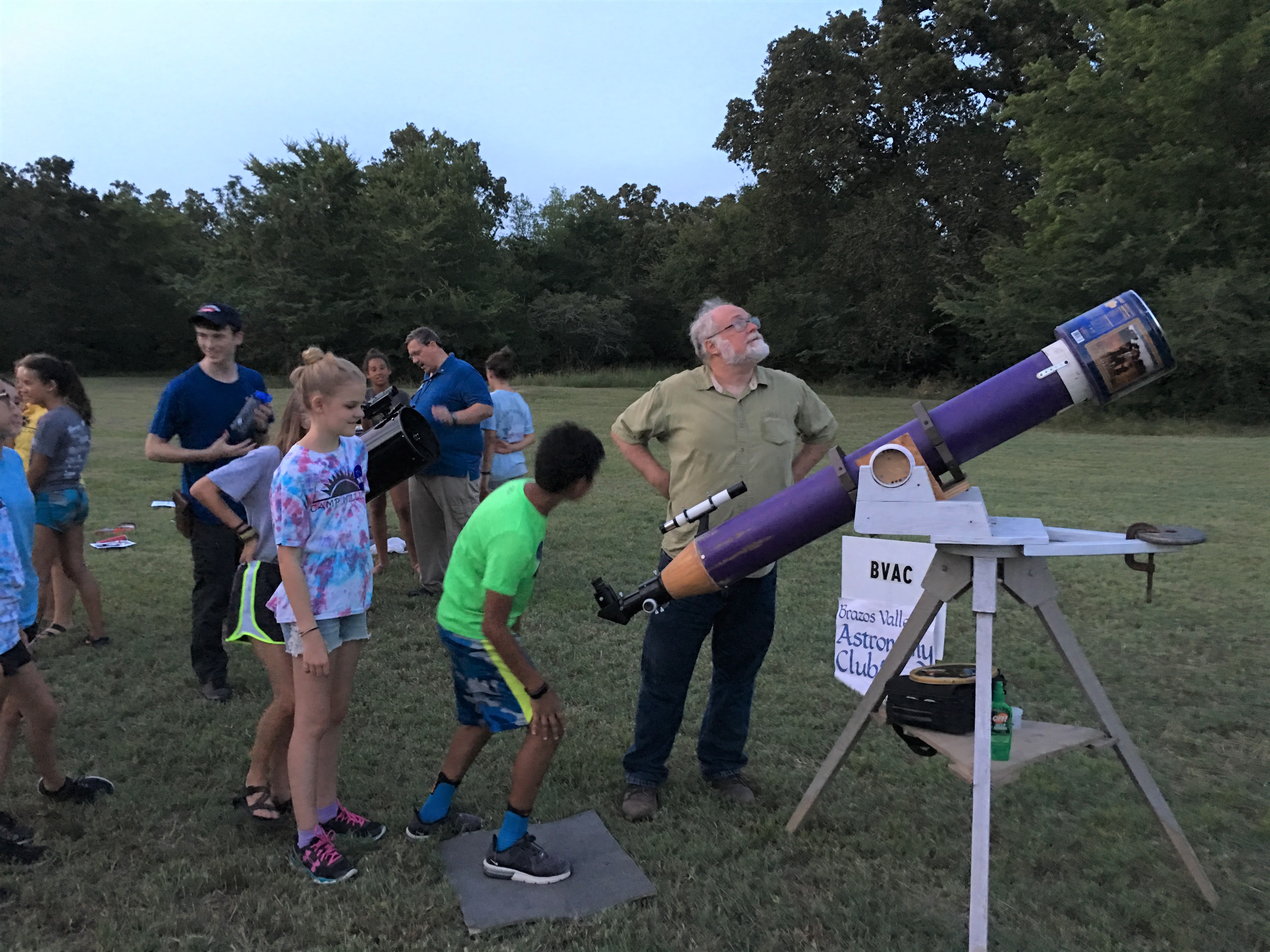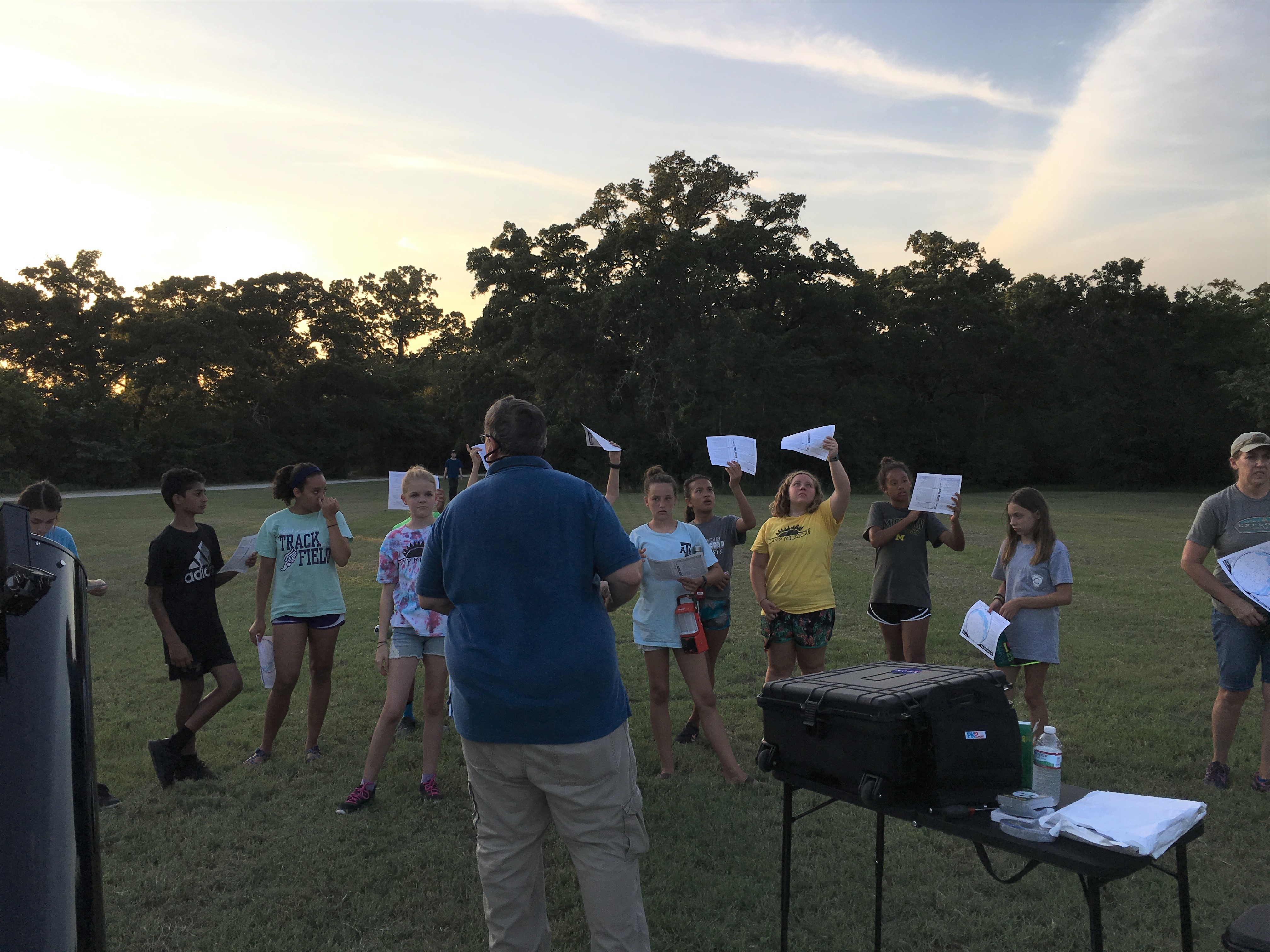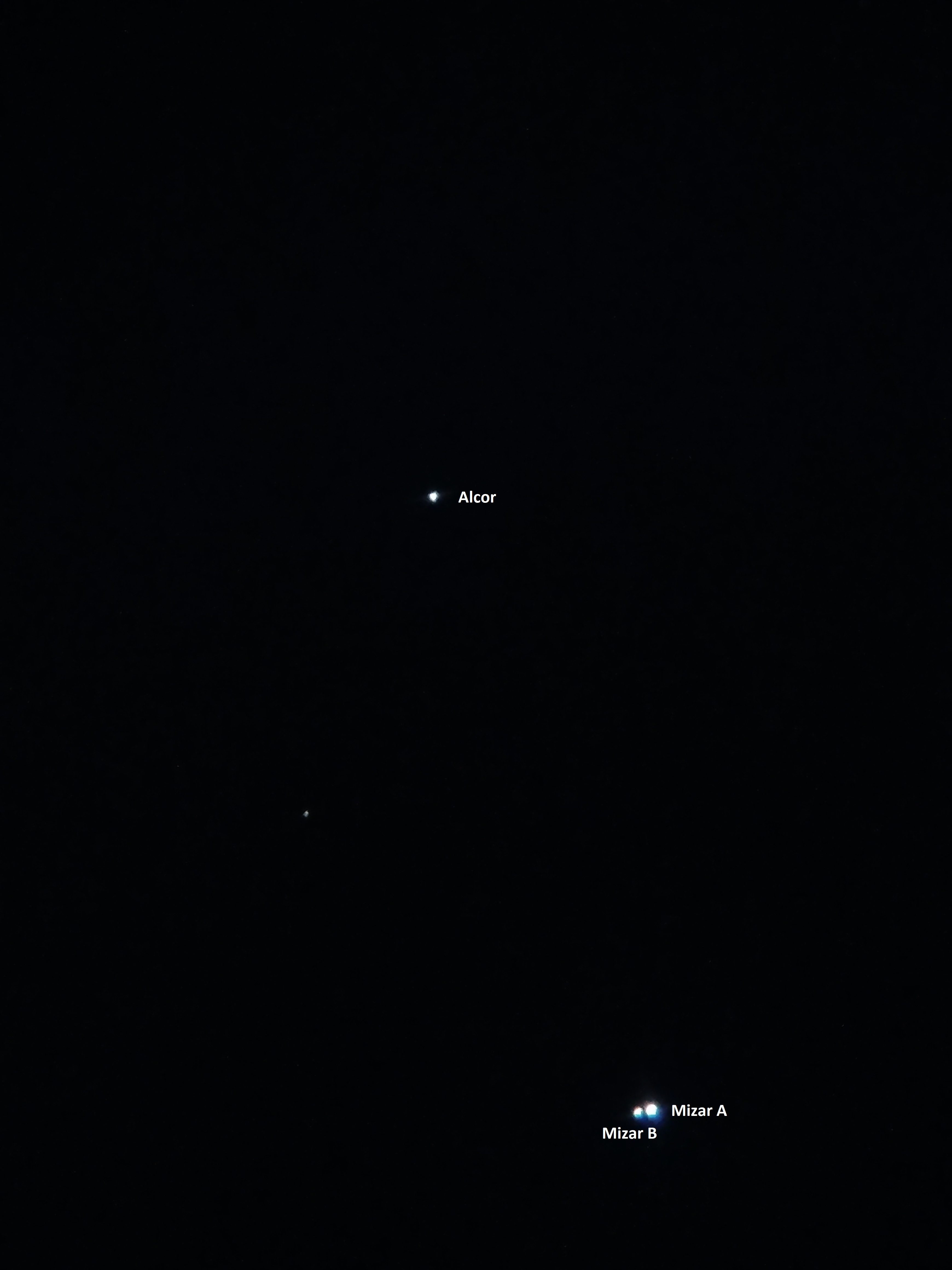
Last night was the third Brazos Valley Astronomy Club outreach at Camp Millican this summer. This time, the campers would be setting up their tents near the lake, so we set up our telescopes in a field nearby. The field was surrounded by trees, which cut off some of the view of the horizon, but did provide some welcome shade while waiting for sunset.
I arrived around 6:30pm and spotted out a location for our telescopes that would offer the best overall view of the Sun, Jupiter and Venus (our three main targets for the evening). I set up Zoomie and attached a solar filter to it. Next I set up Cutie on my AutoStar tripod and attached a sun funnel to it.
By the time I finished setting up my equipment, Tim, the club president, had arrived and started putting his gear next to mine. He brougnt his homemade 6-inch refractor, which has been nicknamed the Purple Pencil. After he was set up, we decided to wander to the campsite to see if our hostess was there yet with the kids. Tim had reported seeing them hiking through the woods when he arrived.

Just as we started off, we spotted the campers coming toward us. We met them and walked the rest of the way to the campsite together. We chatted with the hostess, Andrea, for a few minutes to solidify our evening plans. During this time, a third member of BVAC joined us. Ginger wrote the club newsletter and came with a camera to help us record the event.
The campers began pitching tents for the evening. One of the tents was large and complicated and came with no instructions. Tim mentioned he had experience setting up tents and offered his services to help. I figured I'd be more help just staying out of the way, so I invited Ginger to join me in going down to the dock and watching the fish swimming in the lake for a few minutes. The view was gorgeous.
After Tim got the tent set up, the three of us headed back to the telescopes while Andrea taught them how to make red flashlights with cellophane. The sun was getting lower in the sky, and in fact, was below the tops of the trees. The good news was that we were in the shade and it felt nice. The bad news meant that there would be no solar observing this evening. Just as well. I took a peek earlier and there weren't any sunspots visible anyway.
I removed my solar filter from Zoomie and prepared it for night viewing. Since Tim had brought his large refractor, I figured nobody would care to look through little Cutie, so I put her away as well. By the time I finished, the campers had shown up at the field and were ready for us.
It still wasn't quite dark yet, so we took a few minutes to teach the campers a few basic things about astronomy. I began by passing around some monthly sky charts and explained how to use them properly to find their way around the night sky. I then briefly explained why astronomers use red lights instead of regular flashlights at night.

After I had finished, Ginger passed out some homemade astrolabes and taught the children how to use them to determine a star's altitude. The astrolabes were made using a protractor with a weighted string tied to the middle and a straw to look through. Very clever!

There was still a little bit of time to kill before sunset, so I passed out some NASA stickers. Everyone was excited about that and one of the girls said I was her "favorite sticker man ever." I'm not sure how many sticker men she knows, but I took it as a compliment.
By this time, the sun had finally set. Unfortunately, some clouds were still hanging around. Most were high, thin clouds, but it made seeing the stars difficult.
Venus and Jupiter were taking turns popping in and out of view, so we moved our scopes back and forth between them. Venus had a definite gibbous shape and Jupiter was showing two moons and a couple of cloud bands, even in the twilight sky.
I had connected my cellphone to the eyepiece of Zoomie, so that more than one kid could look at the same time, and also that I could zoom in to show a bit more detail.
After several minutes, the kids were getting bored with nothing else to look at until the skies got darker. A few gathered around and started asking random questions about the planets:
As you can see, these were some very interesting questions and I did my best to answer them simply, but to their satisfaction.
I noticed Arcturus overhead so I turned my telescope to it and asked who would like to see a star. Several of them came over and a couple of them liked the spikes on it, so that gave me a chance to explain that the diffraction spikes were caused by the bracket holding my secondary mirror in place in the telescope and that they wouldn't see them if they looked through the refractor.
I wanted to show them a double star, so I scanned the sky. It was still twilight, but I should have been able to make out the Big Dipper. The high, thin clouds were making it very difficult, however. Finally, I was able to make out Mizar with averted vision and pointed Zoomie to it. I zoomed in with the camera a bit more until Mizar split into two stars. I snapped a quick picture while explaining multiple star systems:

It was finally starting to get dark and I was seeing a few more stars in the sky, but the kids were giving up on the sky and ready to go back to their campsite and start a campfire. Andrea invited us to stay as long as we wished with our telescopes, but the sky conditions weren't improving. I had hoped to try to catch Omega Centauri again from here tonight, but if I was having difficulty even making out the Big Dipper, I had no hope of doing that. Time to call it a night and go home. But it was a lot of fun and I look forward to doing these summer camps again.